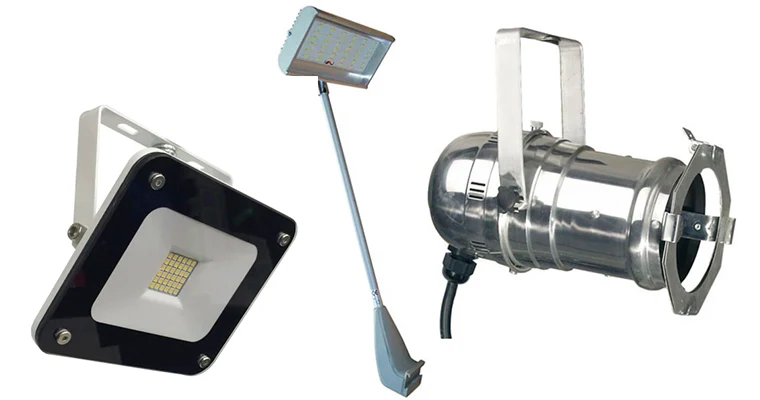
“What are the best lights for exhibitions and events”?
“What are the best lights for exhibitions and events”?
The best lights for exhibitions and events depend on the type of event, the ambiance you want to create, and the practical needs of the space. Here are a few commonly used lighting types and their benefits:
LED Lighting
Why Choose LED?
- Energy-efficient and cost-effective.
- Long-lasting with minimal heat emission.
- Available in a wide range of colour temperatures and brightness levels.
- Can be dimmable and customizable via smart systems.
Best For:
- General event lighting.
- Exhibitions where consistent and bright lighting is needed.
- Accent lighting to highlight art pieces, booths, or key displays
Track Lighting
Why Choose Track Lights?
- Flexible and adjustable to focus light on specific objects or areas.
- Sleek design ideal for exhibitions.
- Often used with LED bulbs for precise lighting control.
- May Led track lights have LED modules now.
Best For:
- Highlighting artwork or product displays.
- Creating focused lighting on centre pieces or key features.
Spotlights
Why Choose Spotlights?
- Provide intense, focused beams of light.
- Ideal for drawing attention to specific exhibits, performers, or speakers.
- Available in portable options for easy repositioning.
Best For:
- Stage performances.
- Art exhibitions or product launches.
- Areas requiring a dramatic lighting effect.
Uplighting
Why Choose Uplighting?
- Adds ambiance and depth by lighting walls, drapes, or décor from below.
- Creates a sense of drama or elegance.
Best For:
- Weddings, galas, or corporate events.
- Adding visual interest to walls or event spaces.
- Transforming plain venues into dynamic environments.
Wash Lights
Why Choose Wash Lights?
- Provide broad, even lighting for large areas.
- Can often be colour-adjusted (via DMX controllers).
Best For:
- Illuminating stages or large spaces.
- Events needing consistent, general lighting.
Factors to Consider When Choosing Lighting
- Venue Type & Size: Indoor or outdoor? Large or small space?
- Event Theme & Mood: Formal, casual, or themed?
- Budget: Balancing cost with impact.
- Power Availability: Ensure sufficient power supply for lighting systems.
- Flexibility: Choose systems that are easy to adjust or reposition.
Understanding lux, lumens, and colour temperature is essential for selecting the right LED lighting for exhibitions, events, or any other space.
LUX
- Definition: Lux (lx) measures the amount of light (illumination) that reaches a surface. It's essentially lumens distributed over a specific area.
- 1 lux = 1 lumen per square metre.
- Use Case: Lux helps determine how bright a space will feel at specific points. For instance:
- Exhibitions: Artwork or objects may need 200-300 lux for general display or 500 lux for detailed inspection.
- Events: Stage lighting typically requires higher lux levels than ambient lighting.
- Key Factor: Lux decreases as distance from the light source increases, so fixture placement is crucial.
Lumens
- Definition: Lumens (lm) measure the total amount of visible light emitted by a source.
- Higher lumens = brighter light.
- Use Case:
- General room lighting: 2,000–3,000 lumens.
- Task lighting (e.g., highlighting exhibits): 3,000+ lumens.
- Comparison to Wattage: Traditional bulbs were rated in watts, but LEDs are rated in lumens because they produce more light per watt. For example:
- A 60W incandescent bulb = ~800 lumens in LED.
COLOUR TEMPERATURE
- Definition: Measured in Kelvin (K), colour temperature indicates the hue and tone of the light.
- Lower Kelvin = Warmer, yellowish tones.
- Higher Kelvin = Cooler, bluish tones.
- Common Ranges:
- Warm White (2,700–3,000 K): Cozy, inviting light, suitable for relaxed settings or intimate events.
- Neutral White (3,500–4,500 K): Balanced, natural light, ideal for exhibitions, galleries, or retail spaces.
- Cool White/Daylight (5,000–6,500 K): Crisp, high-contrast light, great for task-focused environments or modern designs.
- Use Case:
- Exhibitions with artwork: 3,500–4,000 K (neutral white) ensures accurate colour representation.
- Industrial-themed events: 5,000–6,000 K for a clean, modern feel.
- Ambient or decorative lighting: 2,700–3,000 K for warmth.
How They Work Together
- Brightness: Use lumens to determine how much total light is needed.
- Coverage: Use lux to ensure the light reaches where it’s needed, factoring in distance and spread.
- Ambiance: Use colour temperature to create the desired mood or visual impact.
Maybe your application is Retail lighting or High-End Fashion.
- 300–500 lux with neutral white (3,500 K) for overall elegance.
- Spotlights with 1,000–1,500 lux on mannequins and displays.
- Cool white (4,000 K) to make fabrics appear sharp and vibrant.
- Fitting rooms with 500–700 lux and a flattering warm white (3,000 K).
Further Points of Advice
- Lumens: ~3,000 lm per fixture for intense focus on displays.
- Lux: 500 lux at the surface of any art piece.
- Colour Temperature: 3,500–4,000 K to avoid distorting colours.
- Lumens: ~10,000 lm per stage light for bright, dynamic coverage.
- Lux: Varies depending on stage size and distance.

Einen Kommentar hinterlassen